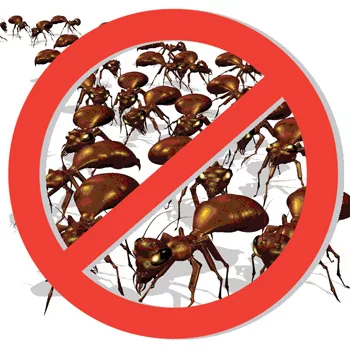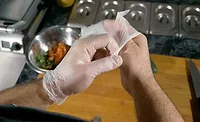Pest Management SOPs for Food Processing Plants and the Importance of FSMA

Sanitation encompasses many areas and functions within a food processing plant, even when not in production. However, certain sanitary procedures must be addressed and maintained daily to prevent direct product contamination or adulteration of ingredients within the plant. Good sanitation is essential in these areas to maintain a safe food production process—a practice made even more crucial with the implementation of the Food Safety Modernization Act (FSMA).
One key aspect of sanitation is the prevention and immediate elimination of any and all pest infestations in a food plant. Typically, unsanitary conditions tend to provide the perfect environment for pests by allowing them access to food, water and nesting sites. Nearly everyone is familiar with the conditions and pest violations inside the Peanut Corporation of America’s processing plant that led to a massive Salmonella outbreak in 2009, the eventual shutdown of the plant, bankruptcy and liquidation of the company and judicial action against management. This example and countless other recalls are the reasons why every food processing plant should develop strict Standard Operating Procedures (SOPs) relating to sanitation and pest management.
Pest Threats and Management Challenges
The pests most commonly found in food processing facilities are cockroaches, flies, beetles, ants, moths and rodents. Each of these pests presents a different set of problems for the facility, from equipment and food contamination to consumer backlash and U.S. Food and Drug Administration (FDA) fines and possible plant closures.
Pest management in food plants can be challenging due to numerous factors. Whether it’s that some pests may enter the facility through the delivery of raw food items and packaging materials, the presence of food odors and exterior lighting or the sheer size of facilities, which provides numerous harborage sites for pests, each of these underscores the importance of a strict program.
The most successful approach to pest management in food plants is the use of integrated pest management (IPM), a process involving common sense and sound solutions to treat and control pests. These solutions incorporate three basic steps: inspection, identification and treatment. IPM programs use current, comprehensive information on the life cycles of pests and their interactions with the environment, and are essential in detecting and controlling pests in food processing facilities.
Establishment of SOPs
Because of the crucial role pest management plays in sanitation inside food plants, it is important that facility managers work with their pest management company to develop and establish SOPs, including methods of inspection and treatment, as well as provide appropriate documentation. At a minimum, all protocols and procedures shall include the following:
• Procedures for all current or anticipated pest management activities, including inspections and audits. The written procedures should be detailed and include frequency of action.
• Pest sightings and pest activity logs. These logs should contain the exact dates, times and locations of pest sightings, as well as the type of pest.
• Treatment records. These should contain the details of each performed treatment, ensuring they’re accurate and up to date, and include both inspection dates and the locations of treatments performed.
• Trend reports. Because the final determination of a pervasive pest problem requires expertise, pest technicians will develop these reports based on the inspections, pest sightings and activity logs.
• Plant layout. The pest technician and plant managers should keep an updated layout of the facility listing pest management activity information.
• Responsible individuals. Those persons who are in charge of recordkeeping and pest management oversight between professional inspections.
• Corrective measures. Should there be a need for a change in or a deviation from the pest management program, these measures will outline what must be done instead.
The Impact of FSMA
FSMA is easily the biggest reform of U.S. food safety laws since the 1930s. The act mandates stricter measures for food made in the U.S., while also giving FDA unprecedented authority in enforcing these regulations. Of most importance is a shift in the focus of federal regulators from responding to contamination to proactively preventing any and all dangers.
Although the final implementation of FSMA was scheduled for June 2015, an agreement between FDA, the Center for Food Safety and the Center for Environmental Health set a new schedule for the following four regulations:
• Preventive controls for human and animal food (August 30, 2015)
• Imported food and foreign suppliers and produce safety (October 31, 2015)
• Food transportation (March 31, 2016)
• Intentional adulteration of food (May 31, 2016)
However, as FSMA gives FDA much more authority and oversight, nonexistent or inadequate pest management programs can result in fines and shutdowns in addition to tarnished reputations. Since the goal of FSMA is to decrease the incidence of foodborne illness, especially cases that result from contaminated food from manufacturing facilities, operators must proactively implement proper pest management programs to protect the public from the harmful effects of pests and rodents. Additionally, facilities should be implementing preventive treatments and adhering to proper sanitation processes and documentation to remain compliant with the new regulations.
Hazard Analysis and Critical Control Points (HACCP) and other standards familiar to most plant managers are used to identify potential food safety hazards and implement procedures to reduce or eliminate threats before they occur—keeping in line with the preventive goal of FSMA. As part of this process, plant managers in partnership with their pest management company identify CCPs and develop ways to target those points most effectively. Although contamination by insects is not considered within HACCP programs, the steps necessary to implement a HACCP program are relevant to developing pest management programs involving validation, verification and monitoring.
Ongoing Quality Assurance
According to Jim Sargent, Ph.D., a pest control company executive, not partnering with an experienced pest management company is the biggest mistake any food plant can make; not performing thorough program reviews and ongoing employee training is probably a close second. “Operators must always keep a watchful eye and treat every problem at the root, instead of looking for a quick fix,” he says.
In fact, the 2013 Pest Management Standards for Food Plants from the National Pest Management Association state that at least once per year, a supervisor, quality assurance staff person or manager from the pest management company shall review the entire program on-site. The quality assurance audit shall include a review of the program, records, pest activity trends and frequency of service, as well as the monthly inspections to make sure that all documentation is in order. In addition, this group should also review labels and material safety data sheets (MSDS) to ensure that all products currently in use have updated information. MSDS and labels of pest management products used at that facility must be filed either as hard copy or as electronic records.
Results of the quality assurance audit must be filed in the plant, with a copy in the pest management company office.
At least once per year, the pest management company should also offer to conduct an educational program for plant personnel. The date, content and list of those who attend the program must be kept in the plant pest management records.
The following staff should be invited and encouraged to participate:
• Management
• Supervisory staff
• Security
• Mechanics
• Production lead staff
• Warehouse staff
• Quality assurance staff
• Plant contact
• HACCP committee, if applicable
• Others determined by the plant management
Continuing education for plant personnel is critical to implementing successful pest prevention programs and can prepare facilities to act swiftly if problems occur. Even in cases where professional pest inspections are conducted on a weekly basis, it is the plant employees whose vigilance and responsibility can keep the facility free of pests in the interim.
Treatments
Should a need for pest elimination arise, experienced pest control companies can create custom management programs, taking into account multiple factors, including the type of facility in question, the size, the species of pest(s) and the type of food handled and produced. Because of requirements related to Good Manufacturing Practices in food plants, it is critical to employ devices placed in targeted areas to increase the level of control while minimizing pesticide use.
If pesticides are needed, pest management professionals are required by law to follow U.S. Environmental Protection Agency-registered label instructions and utilize only products approved for use in food processing facilities. Depending on the application site and product being applied, special precautions may need to be taken. For instance, in some cases, production may need to cease, food and prep areas may need to be covered or surfaces and equipment may need to be washed.
The Bottom Line
Sanitation and expert pest management go hand in hand to prevent insect and rodent infestations in food plants, thereby preventing food contamination, consumer illness and death, lawsuits, plant closures and negative publicity. Food plants are on the front lines of protecting the safety of the U.S. food supply and the millions of consumers who rely on food companies to deliver safe, quality products for consumption.
With the implementation of FSMA, good sanitation protocols and proactive pest prevention programs are no longer optional for any food processing facility, regardless of size. Under the new law, companies that fail to comply with FSMA will pay a heavier price than ever before.
Jim Fredericks, Ph.D., is chief entomologist and vice president of technical and regulatory affairs for the National Pest Management Association (NPMA).
Missy Henriksen is vice president of public affairs for NPMA.
Looking for quick answers on food safety topics?
Try Ask FSM, our new smart AI search tool.
Ask FSM →








